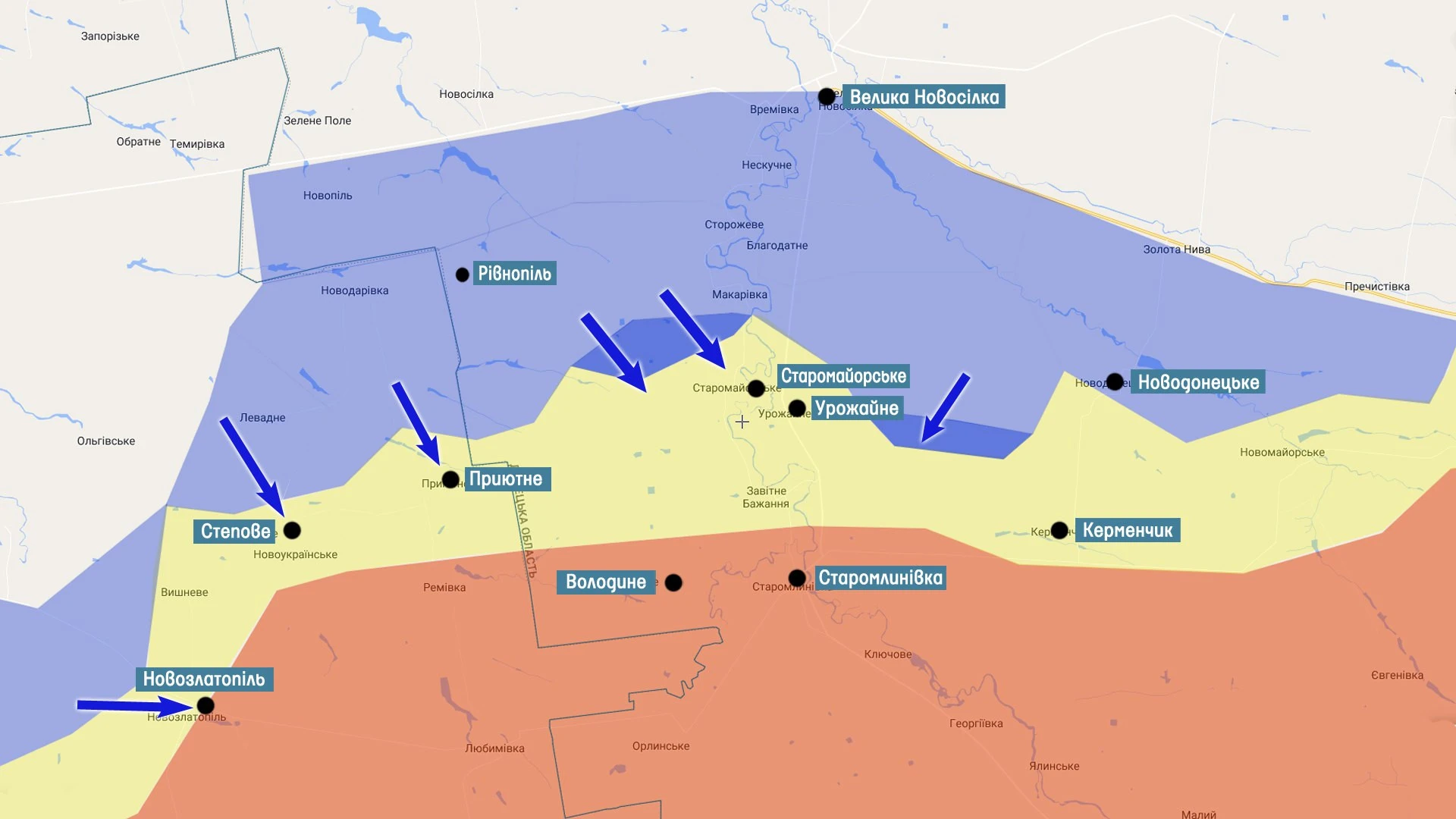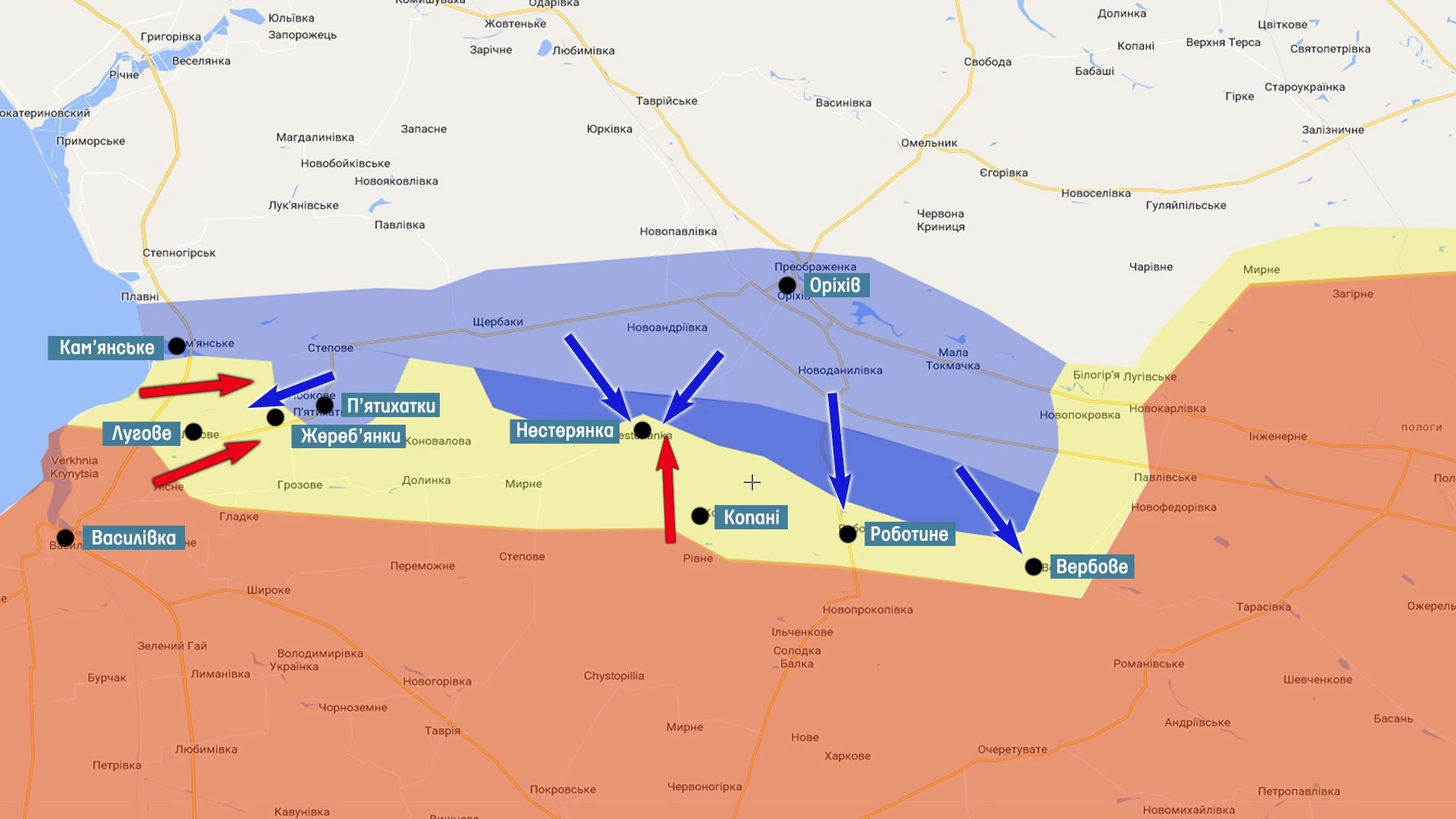
Ukraine’s success should be measured not only by kilometers, but by number of enemy casualties - military expert Serhiy Zgurets
During the current stage of the conflict, the primary objective along the entire frontline, particularly in the southern area, is to inflict maximum damage on the enemy's manpower, equipment, ammunition and fuel depots, command posts, and artillery
Frontline situation
In the Tavria direction, and more specifically in the Berdiansk direction, the Ukrainian Armed Forces have made significant advances into enemy territory up to 2 km. The Ukrainian defense forces are systematically driving Russian troops out of their positions and continuing to advance. I won't go into details, let's wait for the General Staff’s reports. However, I would like to note that our successes should be measured not only by kilometers, but also by the number of enemy casualties.

During the current stage of the conflict, the primary objective along the entire frontline, particularly in the southern area, is to inflict maximum damage on the enemy's manpower, equipment, ammunition and fuel depots, command posts, and artillery.

This stage is crucial for weakening Russia's forces and capabilities, similar to the liberation of the right bank of the Kherson region. It took over 2 months back then, but many enemy paratroopers managed to escape during their retreat and continue fighting. We must now prevent them from having any chance of survival, including both the defending troops and the reserves, which are being deployed to reinforce their defensive positions across the entire southern front.
Today, Oleksiy Danilov, Secretary of Ukraine's National Security and Defense Council, expressed the opinion that the war of destruction holds equal importance to the war of territorial gains. In other words, the more destruction inflicted upon the enemy, the more liberated our land becomes. It is reasonable to agree with these sentiments shared by Oleksiy Danilov.
Now the enemy's daily losses are somewhere between 1.5 to 2 battalions per day, and this is good. According to the General Staff of the Ukrainian Armed Forces, over the past day, Ukrainian soldiers managed to eliminate almost 800 Russian occupiers, and destroyed more than 30 pieces of artillery.
The Special Operations Forces released a video showing how operators of one of their units found 3 Russian Grad missile systems at once. The coordinates of these Grads were transferred to the artillery and they destroyed them using high-precision ammunition.
According to the calculations provided by the Oryx agency, which offers reliable information on Russian losses, 135 Russian Grads have been destroyed since the beginning of hostilities. This number might actually be higher, as Oryx's count is based solely on the photos available to them.
Another notable example is the recent incident where 4 Msta-S self-propelled systems were destroyed simultaneously by HIMARS. This operation followed a similar pattern: drones were used to identify the location of these artillery systems, and HIMARS swiftly targeted and neutralized them. While HIMARS were initially employed for striking command posts and ammunition depots, it is evident that enemy artillery systems have also become high-priority targets. This strategic approach aligns with the ongoing objective of the Armed Forces to dismantle the enemy's potential.
By the way, last month was extremely productive: 688 pieces of artillery were destroyed. I believe that July will be even hotter for the enemy. While many emphasize that the war with Russia revolves around drones and artillery, I personally believe it is a war fought primarily by infantry. It is the ground units that define the front line, determine the defense positions, and shape their evolution. The same principle applies to the offensive maneuvers carried out by ground forces.
Ukrainian units regularly share numerous videos from various frontline locations, which serve as valuable learning resources. These examples offer insights into how Ukrainian forces execute offensive operations, enhance tactics, and employ strategies to reclaim our land by forcing the enemy out. These individual fragments of the war gradually contribute to a comprehensive understanding, evoking emotional responses among the public. Additionally, experts analyze these videos to identify key highlights that shed light on the evolving tactics of infantry ground units.
Lieutenant Oleksandr Yabchanka, from the 67th Separate Mechanized Brigade of the Da Vinci Wolves Battalion of the Honor Group, expressed the following perspective: the command establishes the overall strategy of warfare, but it is those on the frontlines, directly engaged in combat, who determine the conduct of the war through their fire and impact. When the Commander-in-Chief sets a particular pace of advancement, it signifies a deliberate plan. It is easy to make assumptions when not in the trenches. Every meter of our land is given by the blood of our defenders. With all due respect to our partners and their expectations, it is up to the people in the trenches and those who plan operations to decide how to fight. We need to take into account that we are advancing by dedication and professionalism, but not by having superiority in the sky or the number of shells. Such frustrations with slow progress are unethical, to put it mildly.
Infantry's latest combat equipment
Lieutenant Yabchanka said that his unit is actively trying to get the latest equipment, namely turrets (a system for mounting and using a machine gun, usually a large-caliber gun, small-caliber gun or missiles in combat). The unit already has 7.62 mm caliber turrets. Once video footage becomes available, it will provide a clearer perspective on the military's utilization of these mobile platforms in assault or defensive actions. There is an optimistic outlook that the Ukrainian Armed Forces can transform into the most technologically advanced army globally, where robots assume the role of infantry in carrying out assault or defensive operations.
I would like to add to Oleksandr Yabchanka that there is a Lviv-based company that manufactures both robotic platforms and turrets. This company has already supplied more than a dozen of these 7.62 mm stationary turrets to the troops. Prior to the full-scale invasion initiated by Russia, Ukrainian companies involved in manufacturing robotic platforms had presented their developments to the command of the airborne assault troops. However, at that time, it did not appear to be a pressing matter. Now, as our guest has highlighted, the demand for robotic platforms and mobile turrets has significantly increased. These technological solutions not only fulfill combat objectives but also contribute to the preservation of the lives of our military personnel.
Yabchanka emphasized that the integration of turrets and platforms will revolutionize the composition of a rifle platoon. The exact number of turrets required for a platoon is yet to be determined, and it is within our power to define this. Essentially, we are shaping the future of warfare. The reality is that the enemy does not hesitate to sacrifice their personnel, deploying as many as necessary. However, we cannot afford such a strategy. Therefore, we must devise innovative approaches that will alter the dynamics of the battlefield and change the rules of engagement.
The Ukrainian soldier emphasized the importance of enhancing situational awareness and precision in engaging the enemy. It is crucial to make it challenging for the enemy to detect and target our forces. We must have UAVs and people who know how to operate them. Now there is no shortage of this, but in war there is always a need for more resources. And to make the means of destruction more effective, we use things like turrets, which maximize the protection of the infantryman. The only thing we have a deficit of is the means to blind the enemy, i.e. anti-drone guns. As for turrets, I repeat, the more of them we have, the higher our security.
- News












































